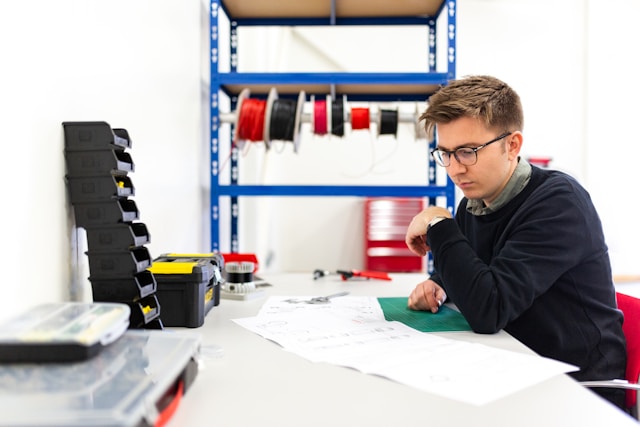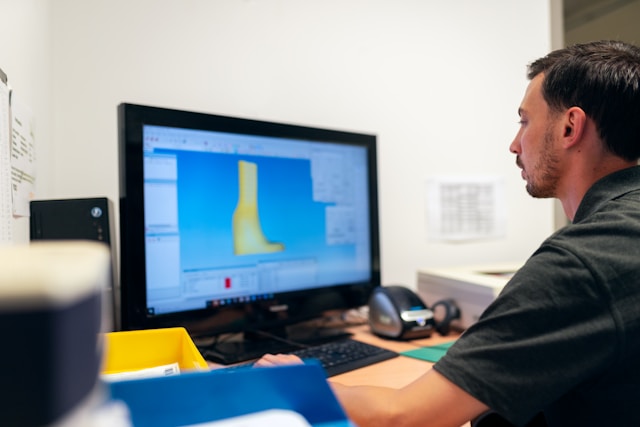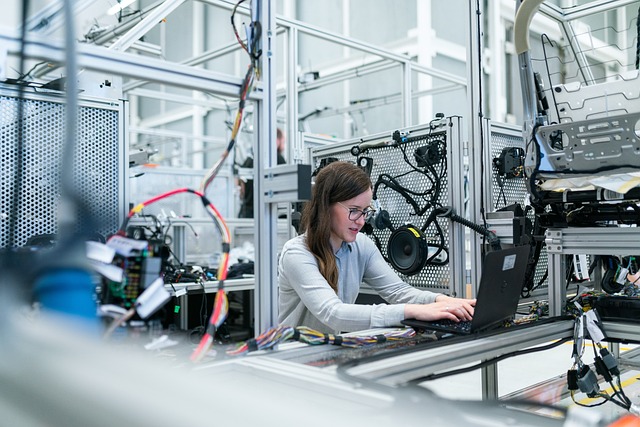Essential Electrical Engineer Questions and Responses

Preparing for an electrical engineering interview can be challenging, but reviewing common Electrical Engineer Interview Questions can make a big difference. These questions help employers assess your technical skills, problem-solving abilities, and industry knowledge. Below, we’ve compiled a list of frequently asked questions with short, clear answers to help you confidently navigate your interview.
What is Ohm’s Law?
Ohm’s Law states that the current through a conductor is directly proportional to the voltage and inversely proportional to the resistance (V = IR).
What are the types of electrical circuits?
The main types are series, parallel, and series-parallel circuits.
What is the difference between a generator and a motor?
A generator converts mechanical energy into electrical energy, while a motor does the reverse.
What is the purpose of a transformer?
A transformer is used to increase or decrease voltage levels in an electrical circuit.
What is power factor? Why is it important?
Power factor is the ratio of real power to apparent power in a circuit. A high power factor improves energy efficiency.
What are the three main types of electrical faults?
Open circuit fault, short circuit fault, and earth fault.
What are the advantages of using a three-phase system over a single-phase system?
Three-phase systems are more efficient, provide constant power, and are suitable for heavy loads.
What is the function of a circuit breaker?
A circuit breaker protects an electrical circuit by interrupting current flow during faults or overloads.
What are the differences between AC and DC current?
AC current alternates direction periodically, while DC current flows in one direction.
What is the difference between a fuse and a circuit breaker?
A fuse melts to break a circuit during overload, while a circuit breaker can be reset after tripping.
What are the components of an electrical power system?
Generation, transmission, and distribution systems.
What is a capacitor, and how does it work?
A capacitor stores electrical energy in an electric field and releases it when needed.
What is the difference between a conductor and an insulator?
A conductor allows the flow of electric current, while an insulator resists it.
What is the purpose of grounding in electrical systems?
Grounding protects against electric shocks and ensures safe operation by redirecting fault currents.
What is a rectifier?
A rectifier converts AC (alternating current) into DC (direct current).
What is the difference between active and reactive power?
Active power is the usable power, while reactive power is used to maintain voltage levels in the system.
What is a PLC, and where is it used?
A Programmable Logic Controller (PLC) is a digital computer used for automation in industrial processes.
What are harmonics in electrical systems?
Harmonics are voltage or current waveforms with frequencies that are multiples of the fundamental frequency, which can cause inefficiencies.
What is the difference between a relay and a circuit breaker?
A relay is a switching device that opens or closes circuits electronically, while a circuit breaker interrupts fault currents to protect circuits.
What is load balancing in power systems?
Load balancing ensures that power is evenly distributed across the system to prevent overloading and ensure stability.
What is the significance of the RMS value in AC circuits?
The RMS (Root Mean Square) value represents the effective value of AC current or voltage equivalent to DC.
What is the difference between synchronous and asynchronous motors?
Synchronous motors run at a constant speed, while asynchronous motors (induction motors) have speed variations.
What is the purpose of a diode in a circuit?
A diode allows current to flow in one direction and blocks it in the opposite direction.
What are the different types of cables used in electrical systems?
Types include coaxial, twisted pair, and fiber optic cables, depending on the application.
What is a step-up transformer?
A step-up transformer increases voltage while reducing current to enable efficient long-distance power transmission.
What are circuit protection devices?
Devices like fuses, circuit breakers, and surge protectors safeguard circuits from overload and faults.
What is Kirchhoff’s Current Law (KCL)?
KCL states that the sum of currents entering a junction equals the sum of currents leaving it.
What are the differences between Star and Delta connections?
Star connections are used for long-distance transmission and higher voltage, while Delta is used for high-current, low-voltage applications.
What are some common electrical safety measures?
- Use insulated tools.
- Follow grounding practices.
- Wear personal protective equipment (PPE).
What is an inductor, and what does it do?
An inductor stores energy in a magnetic field when current flows through it and opposes changes in current.
Common Technologies Used by Electrical Engineer

| Technology | Description |
|---|---|
| MATLAB | Software for numerical computing and simulations, often used in control systems and signal processing. |
| AutoCAD Electrical | Specialized CAD software for electrical design and drafting. |
| PLCs (Programmable Logic Controllers) | Devices used for automation of industrial processes and machinery. |
| SCADA (Supervisory Control and Data Acquisition) | Systems used to monitor and control industrial processes remotely. |
| Multisim | Circuit simulation software for designing and testing electronic circuits. |
| ETAP (Electrical Transient Analyzer Program) | Software for analyzing and designing electrical power systems. |
| Proteus | A tool for simulating microcontroller-based circuits and embedded systems. |
| LabVIEW | Software for data acquisition, instrument control, and industrial automation. |
| PowerWorld Simulator | Software used for power system simulation and analysis. |
| Oscilloscopes | Instruments for observing and measuring electrical signal waveforms. |
| Spectrum Analyzers | Devices used to analyze frequency components of signals. |
| Digital Multimeters (DMMs) | Tools for measuring voltage, current, resistance, and other electrical parameters. |
| PCB Design Software (e.g., Eagle, Altium) | Tools for designing printed circuit boards for electrical and electronic devices. |
| Microcontrollers (e.g., Arduino, Raspberry Pi) | Platforms for prototyping and implementing embedded systems. |
| Renewable Energy Systems | Technologies like solar panels, wind turbines, and inverters used in sustainable power generation. |
| High-Voltage Testing Equipment | Tools for testing and validating high-voltage systems and components. |
| IoT (Internet of Things) Devices | Technologies used for integrating and controlling connected electrical devices. |
Need to Hire an Electrical Engineer? Work with Tier2Tek Staffing!

At Tier2Tek Staffing, we specialize in finding top-tier electrical engineering talent tailored to your unique business needs. Here’s why we’re the perfect partner for your hiring needs:
- Industry Expertise: Proven experience in sourcing skilled electrical engineers across various industries, including manufacturing, energy, and technology.
- Quality Candidates: We thoroughly vet every candidate to ensure they meet your technical and cultural requirements.
- Fast Turnaround: Efficient hiring process to help you fill critical roles quickly without compromising on quality.
- Customized Solutions: Flexible staffing options to match your specific project demands, whether it’s for permanent or contract roles.
- Dedicated Support: Personalized service and a dedicated account manager to ensure your hiring success.
Let Tier2Tek Staffing connect you with the best electrical engineering professionals today!
